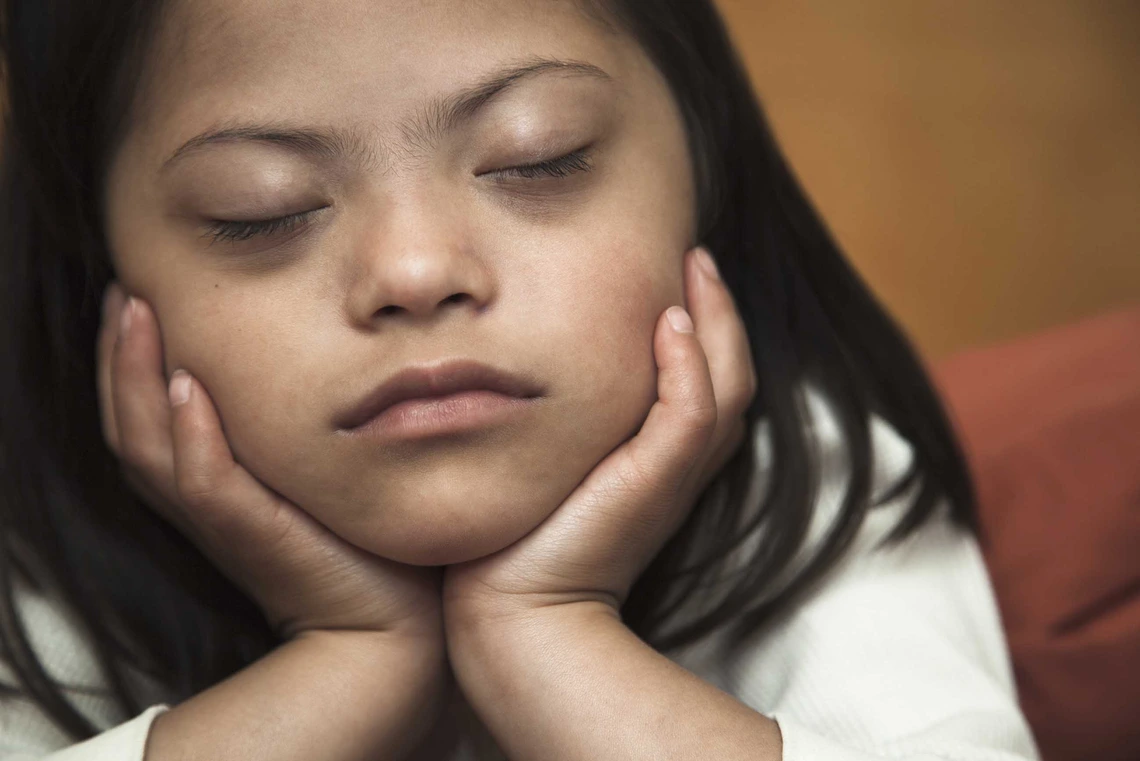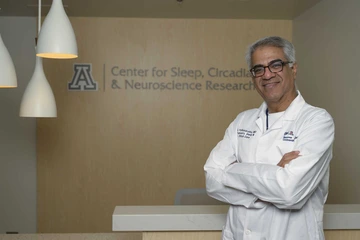$10M PCORI funding award will fuel study of sleep apnea in people with Down syndrome

Up to 80% of people with Down syndrome experience obstructive sleep apnea, a condition University of Arizona Health Sciences researchers are studying thanks to $10.4 million in funding support from PCORI.
Obstructive sleep apnea is a common condition in people with Down syndrome, yet current treatments are not very effective or require surgery. Researchers at the University of Arizona Health Sciences will use a $10.4 million award from the Patient-Centered Outcomes Research Institute, or PCORI, to evaluate a precision medicine approach to increase the effectiveness of sleep apnea treatment in people with Down syndrome.

Daniel Combs
Kris Hanning, U of A Health Sciences Office of Communications
Down syndrome occurs in about 1 out of every 640 babies, according to the Centers for Disease Control and Prevention. Around 50% to 80% of people with Down syndrome have obstructive sleep apnea, or OSA, a condition where people have difficulties with breathing while asleep. OSA can lead to poor sleep, reduced quality of life, behavior problems and difficulty thinking, or cognitive impairment.
"This award from PCORI will build upon the U of A's long history of excellence in sleep medicine research to improve health outcomes for millions of people with Down syndrome," said University of Arizona President Suresh Garimella. "This is an excellent example of how scientific leadership can be leveraged for public benefit, and I look forward to following its impact."
The combination of two medications, atomoxetine and oxybutynin, or "ato-oxy," is a promising treatment for OSA in people with Down syndrome, but ato-oxy does not work for everyone with Down syndrome. Similarly, oxygen is effective for OSA in some people but it does not work for everyone.
The research team, led by Dr. Daniel Combs, associate professor of pediatrics at the U of A College of Medicine – Tucson, and Dr. Sairam Parthasarathy, director of the U of A Health Sciences Center for Sleep, Circadian and Neuroscience Research and professor and chief of the Division of Pulmonary, Allergy, Critical Care and Sleep Medicine at the College of Medicine – Tucson's Department of Medicine, will enroll 200 children and adults with Down syndrome and OSA from five sites across the country.
Half of participants will randomly receive ato-oxy, while the other half will receive either oxygen or ato-oxy dependent upon which treatment would be expected to work better for them based on the individual's specific characteristics of OSA.

Sairam Parthasarathy
Kris Hanning, U of A Health Sciences Office of Communications
"Our goal is to increase the effectiveness of obstructive sleep apnea treatment in people with Down syndrome by evaluating the use of precision medicine therapies based on the specific reasons an individual has OSA," Combs said. "The results will help individuals with Down syndrome and OSA as well as their doctors to use more effective treatment for OSA. This may improve quality of life, cognition and behavioral concerns for people with Down syndrome."
The research team, including Paul Hsu, a professor of biostatistics at the U of A Mel and Enid Zuckerman College of Public Health, and Jamie Edgin, a professor and chair of the psychology department at Virginia Tech, will measure OSA severity, quality of life, behavior and cognition at the start of the study and after 12 months of treatment for every participant. They will also track any treatment side effects for each participant group.
"We have partnered with LuMind IDSC, a leading Down syndrome organization, as our patient stakeholder partner," Combs said. "LuMind IDSC provided input into the proposed study design and will be involved with patient-stakeholder engagement throughout the project."
LuMind IDSC is a national nonprofit that serves as a bridge between Down syndrome and research communities. Its goals are to accelerate research to increase availability of therapeutic, diagnostic and medical care options and empower families through education, connections and support.
Studies have suggested 53% to 76% of children and more than 80% of adults with Down syndrome have OSA, compared with about 2% to 6% of children and 10% of adults without Down syndrome. According to the National Down Syndrome Society, this may be due to factors that tend to occur at higher rates in individuals with Down syndrome such as: facial structure differences, narrow airway in the nose and throat, low muscle tone, poor coordination of airway movements, or obesity. Children with Down syndrome may have enlarged adenoids, tonsils, and tongues obstructing the already narrowed airway.
"This research study was selected for PCORI funding for its potential to provide real-world data on the comparative clinical effectiveness of different approaches to improve health and health care for people with intellectual and developmental disabilities," said PCORI Executive Director Dr. Nakela L. Cook. "We look forward to following the study's progress and working with the University of Arizona Health Sciences to share its results."
This study was selected through PCORI's highly competitive review process in which patients, caregivers and other stakeholders join scientists to evaluate proposals.
PCORI is a nonprofit organization with a mission to fund research designed to provide patients, their caregivers and clinicians with the evidence-based information needed to make better-informed health care decisions.
A version of this article originally appeared on the U of A Health Sciences website.





